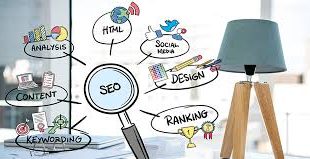It is said that a picture is worth a thousand words. It is quite natural that our attention is focused mainly on the images than on the text. Seeing a good image unwittingly triggers viewers to see it or even share it. Well, in that case, your website will have better new images! But the question is, does adding a number of images increase the visibility of your page? If only it were that simple! You must go through a series of steps of image optimization if you want to get better results.
Click Here : SEO Services
What is Image Optimization?
The optimization of the image for your website guarantees an increase in the speed of page load, a higher SEO ranking and a better user participation. If your web page contains high resolution images and less size in the correct format, then half the work is done. Basically, the optimization of the image is what was mentioned above. It can be done in many ways, either manually or using great online tools.
Step 1: Choosing the Image
It is obvious that the image you choose must match the content. But that’s just the tip of the iceberg. The visual must be attractive, unique and relevant to the subject. Now, where can you find images according to your requirements? There are many websites from image sources such as Flickr.com, shuttershock.com and unsplash.com.
Instead of images, you can also try animated GIFs that will give a sense of dynamism to the viewers. In addition, the popularity of GIF is immense, so it will be a small detail for your publication.
Step 2: Size and Resolution of the Image
Google always prefers high resolution images. But keep in mind that with high resolution, comes a large image size. Large images make your page heavy and, therefore, load slowly, especially on mobile devices. This increases the likelihood of a bounce (users who click the back button even before the page is fully loaded), and you do not want that to happen. There are a number of online services available that you can use to compress your images without loss of quality.
Step 3: Dimensions and Aspect Ratio of the Image
When designing your image, you should have a good idea about where you want to place it on your website. It will help you to establish a particular dimension for your image. Even if images are visually more attractive than text, nobody likes large images that block their content. It must have an optimal dimension that must be perceptible but at the same time it should not distract.
The relationship between the width of an image and its height plays a very important role, although most people do not mention it. The aspect ratios are chosen for a based on the objects in the image, and also their purpose. For a fresh banner image, an aspect ratio of 3: 2 is recommended, since it gives a panoramic feeling. Other popular aspect ratios that give better rankings in the search engines are 1: 1 (square), 4.3, 16: 9 (wide) and so on. When you select an aspect ratio for an image, make sure that the image does not have many empty spaces. At least 35% of the image must contain the object you want to display. More than its technical side, the aesthetic comes to play here.
It is recommended to have a basic idea about where you will place the image on your page. If you are making a new design, it is always better to first fix the aspect ratio and then go through the design process.
Step 4: Format of the Image
TIF is the highest quality available for an image. The original photographs come mainly in this format, but you can not use them on your page. The answer is obvious, right? Large file size Therefore, the image must be exported to an “affordable” format before using it on your page. Even if you are creating a new design for your page, you must export it to a specific format.
There is no definitive format for an image to be used online. It is purely contextual. For example, most prefer the JPEG format because of its negligible loss of quality during compression and its small file size. But if your image consists mainly of texts, lines or drawings, PNG is recommended. In addition to this, GIFs are excellent, especially for decorative images, but they come with a large file size. So, the bottom line is, always choose the format of your image according to the content and the context.
There are other formats that are gaining popularity these days as WebP, which is made especially for internet images. WebP images can be downloaded quickly and obviously, which makes it suitable for downloadable content. Icons and logos are better loaded in SVG format.
Step 5: Adding Attachment Details for the Image
Well, now that your image is ready and loaded, it’s time to add your details. Most of us forget or ignore this step, but we can not emphasize it enough, it is very important from an SEO perspective. How to add image details is a completely different subject. It depends on what type of website content management system (CMS) you use. You may be familiar with CMS like WordPress, which allows you to easily add image details through software. If you follow a more conventional way, you can also add them using HTML codes.
The most basic details of an image are its title, title, alternative text and description. Adding all these elements to your image will help the search engine recognize the content and purpose of the image.
The title of the image defines its permanent link. It must be something that reflects the content. For example, it is not recommended to give the title as image-1 or image-2 because it does not mean anything to the search engine.
Even if you have text embedded in your image, it is likely that the search engine can not track that text. In short, the search engine can not see or understand what your image is. That’s where the alternative text comes in. The alternative text of the image is fundamentally a transcription of the image and makes its image “visible” online. Ideally, you should describe the search engine exactly what is in the image, but it can also be used to describe the content of your page. Either way, the alternative text is very powerful and should not be used. However, if the image is for decorative purposes only, you can skip this small step. Another important feature of the alternative text is that it is captured by screen readers, browsers used by blind people. The screen reader can not understand the content of the image unless there is an alternative text in the image.
Do not forget to add a small description about the content of the image. You can use your keywords wisely here, but as usual, do not fill in keywords.
Step 6: Enhance User Experience With Your Images
This has nothing to do with the ranking of the search engine directly, but if you look at the big picture, it’s all about the user experience, right? If the user does not like the appearance of your page, it is useless. The images can improve and decrease the user experience of your website.
Always use an optimal number of images for your web page. A large number of images will appear disordered, decreasing the visual appeal of your page. Not to mention that this increases the size of the data, making your page slower to load.
Place your images in such a way that they are visible and not distracting at the same time. They should not hinder the user’s reading experience.
Use the psychology of color in your images to attract target users to your site. Different age groups respond to different color combinations and you can select the appropriate combinations according to the type of content you are publishing.
You can use the Content Delivery Network (CDN) for the images on your page. With the help of CDN, you can host your static content (images, videos, animations, etc.) on a different server that provides high speed delivery, which makes your page load faster.
Click Here: Digital Marketing Lahore
 Universal Bloggers
Universal Bloggers




